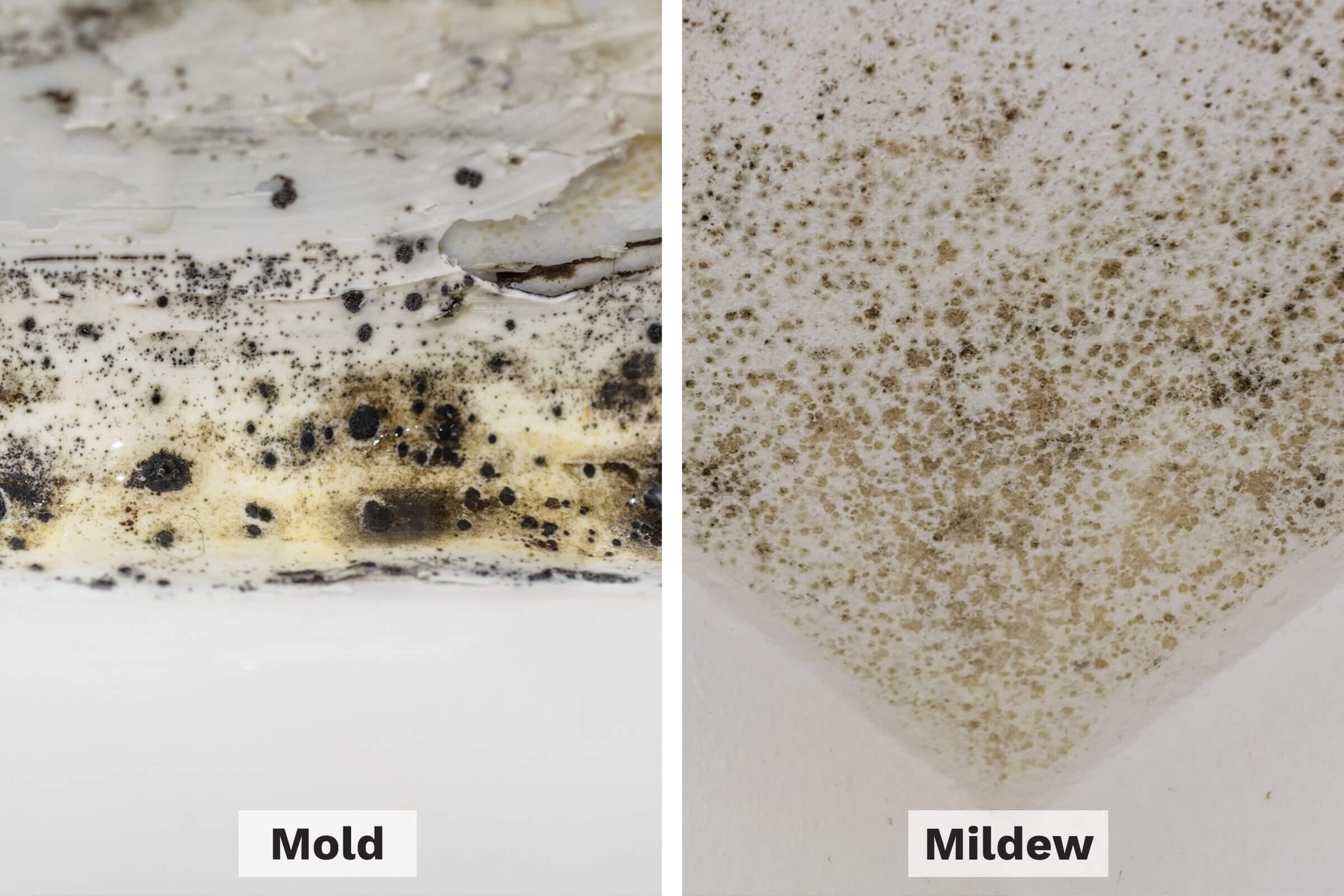
Mold and mildew are often treated as if they are the same thing. While there are some definite similarities, including the fact that mold and mildew are both fungi species, these are different types of problems that require different approaches.
What’s the difference between mold and mildew – and what should you do if you find either one in your house?
Mold vs. Mildew: Basic Differences
Mold is a type of fungus, and mildew is literally a type of mold. There are more than 100,000 different species of mold, some of which are microscopic and some of which are capable of growing in bigger, more visible ways. Both mold and mildew are fungi that thrive in similar types of environments; in areas with high levels of moisture, still air, moderate temperatures, and nutritious substrates, both mold and mildew can thrive.
Additionally, both mold and mildew can have negative health effects, though these effects will vary depending on the species present, the extent of the problem, and the genetics of the person exposed to these species. Some mold and mildew problems are so small, and some people are so resistant to the effects that they can cause no issues. In fact, you’re probably breathing in and out mold spores as we speak, since mold is incredibly common and microscopic.
But bigger infestations tend to be a much more noticeable, potentially deadly problem. While mold and mildew share much in common, there are a couple of big differences between them. Generally, mildew is more commonly found on the surface of your home, rather than penetrating deep into your walls, and it’s less likely to cause health effects. If you have mildew, you’ll likely be able to clear it away with some basic cleaning.
If you have mold, on the other hand, you may end up needing to call a mold remediation company. Mold has a greater tendency to penetrate deeply into your home, infesting your walls, insulation, and even the ducks of your heating and cooling system. On top of that, mold can cause some serious physical damage – and in some cases, threaten your life.
Signs of Mildew
These are signs that you probably have a mildew problem:
· Grayish white to brown. Most types of mildew have coloration somewhere on this spectrum.
· Flat, powder nature. Mildew appears flat and has a powdery texture.
· Surface-level appearance. Mildew typically appears on surfaces.
Signs of Mold
These are the signs of a mold problem:
· Foul, musty smell. Mold has a signature smell that most people can recognize instantly when walking into a room. Mildew may have a slight smell to it, but mold has a prominent foul, musty odor.
· Fuzzy appearance. In contrast to powdery mildew, mold often appears fuzzy.
· Distinctive colors. Mold can appear as black, bright red, green, or somewhere in between. Because there are so many different types of mold, it can have a range of appearances.
When to Call a Pro
When you first spot a mold or mildew infestation, you can attempt to remove the problem yourself. With household products, like basic soap and water OR a 50-50 mixture of bleach and water, and a bit of scrubbing, you can get rid of most small-scale fungi growths yourself. If the infestation isn’t too bad, it might go away and never come back. But if you notice a lingering smell, or if the problem returns shortly after you attempt to correct it, you may have a bigger problem on your hands.
When in doubt, call a professional. If you’re not sure whether you’re dealing with mold or mildew, if you have reason to believe this is a big, deep-seated problem in your house, or if you or a family member is dealing with negative health outcomes as a result of mildew or mold exposure, it’s critical to call a mold remediation company and have them evaluate the problem.
Preventing Mold and Mildew
Fortunately, most mold and mildew problems can be prevented with the same set of simple steps:
· Fix leaks and moisture issues right away. Most mold problems appear after a leak or moisture issue in a home. If you have a leaky roof that you don’t take care of right away, the extra water can be trapped, creating a perfect environment for mold to grow. Whenever you notice a problem like a leaky roof, a flooded basement, or rooms of your house that always feel humid, take action to fix the problem.
· Improve air circulation. Mold and mildew struggle to grow in environments with excellent air circulation; air circulation makes it harder to reproduce and facilitates drying, which removes the moisture that these fungi species need.
· Use a dehumidifier. Without water or moisture, fungi cannot grow. Dehumidifiers are your best friend in mold prevention.
· Use mold inhibitors. Mold resistant products may also play a role in inhibiting the growth and development of mold and mildew.
If you think you might have a mold or mildew problem, you should take action on it right away. Do your best to clean up the area, but if you see any indications that your cleanup work is insufficient, or if you suspect the problem might be deeper than you can reach, you should call a professional mold remediation company immediately.
Kane Walker
Related posts
Stay connected
Today's pick
- Things to Remember While Designing Your Custom Modular Kitchen in GurgaonGurgaon now known as Gurugram is the second largest city in the state of Haryana and is a reflectiossn of an ideal modern city with futuristic goals. Witnessing rapid urbanization, it has also emerged as a hub for contemporary homes, with homeowners seeking innovative and... The post Things to Remember While Designing Your Custom Modular […]

